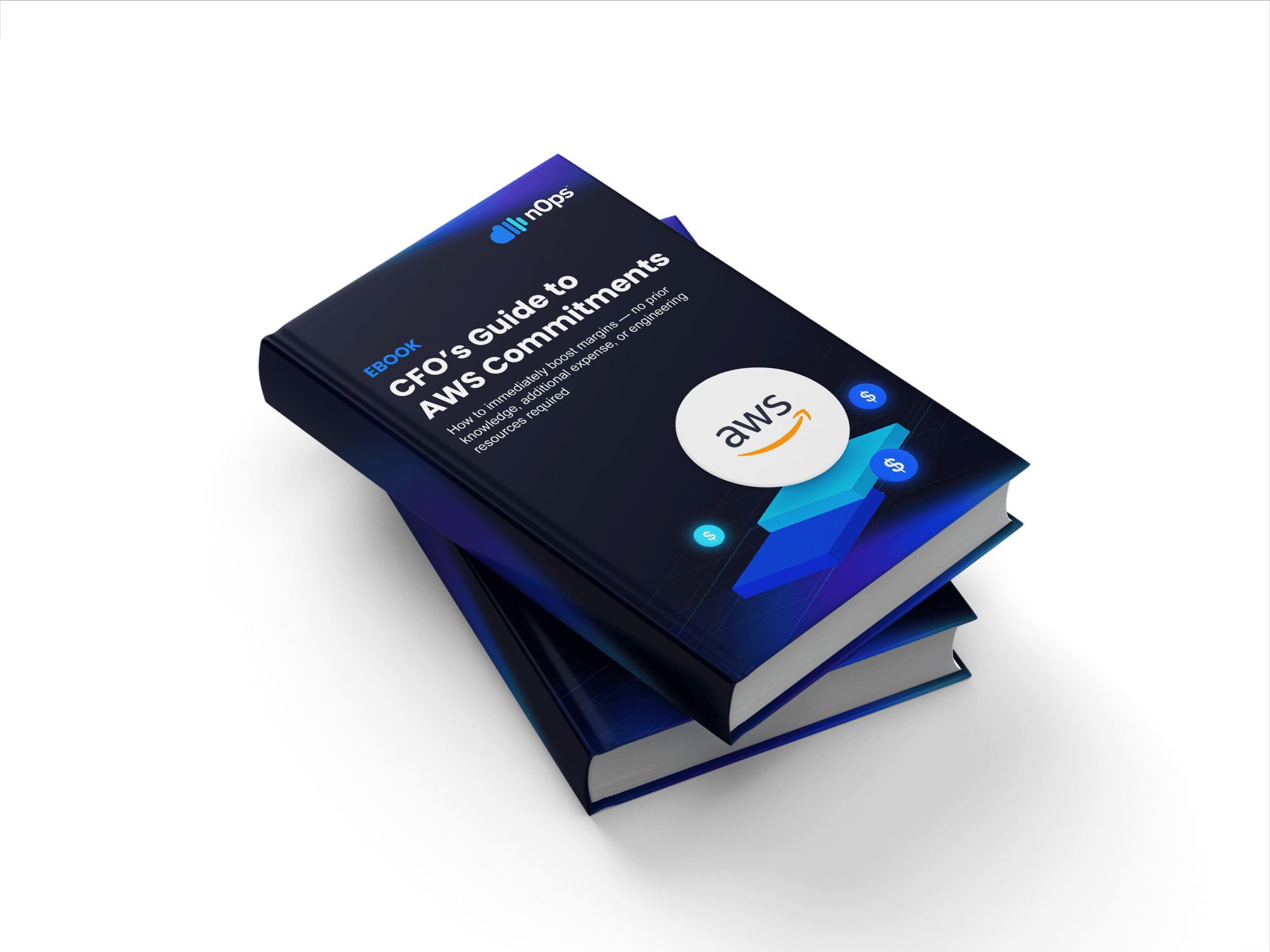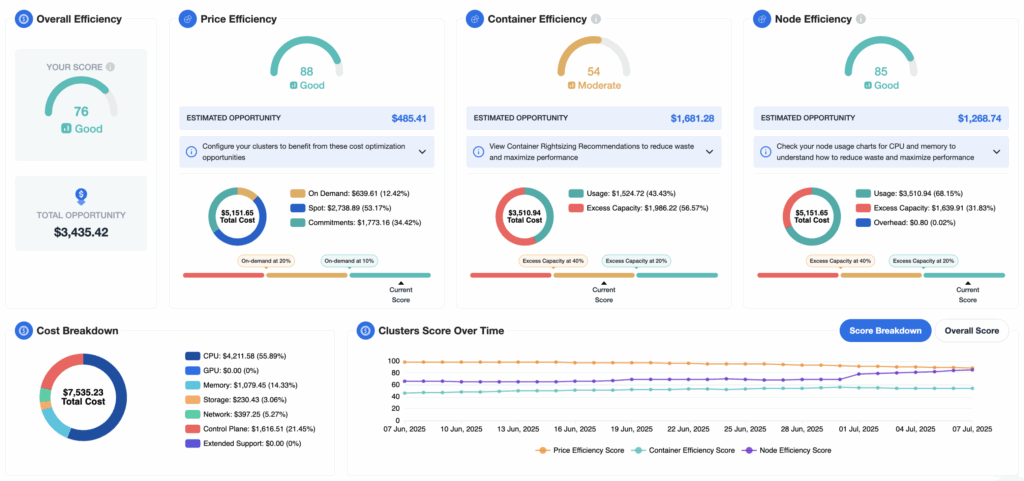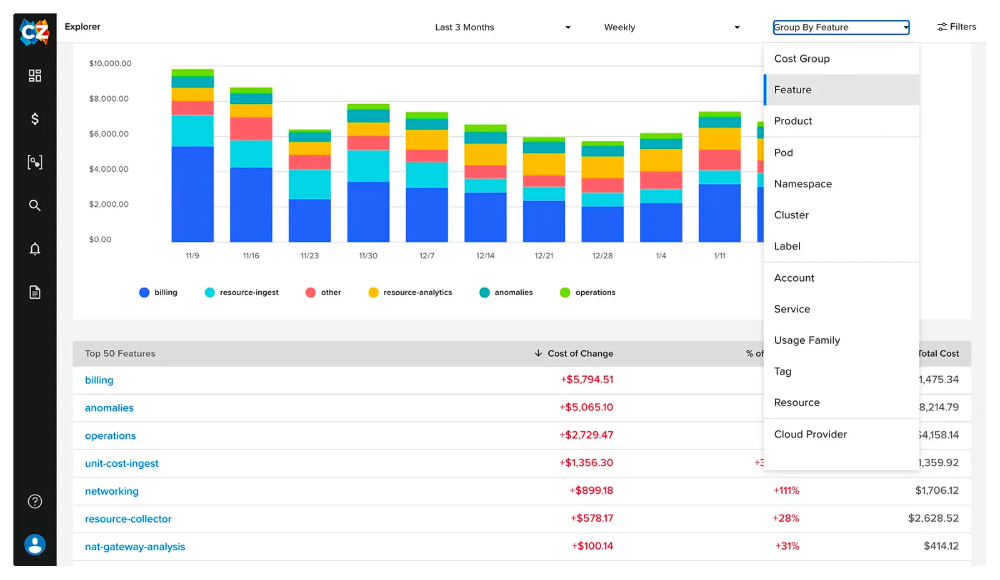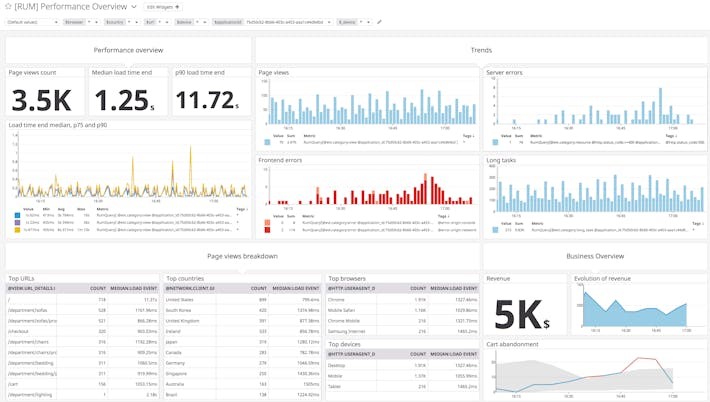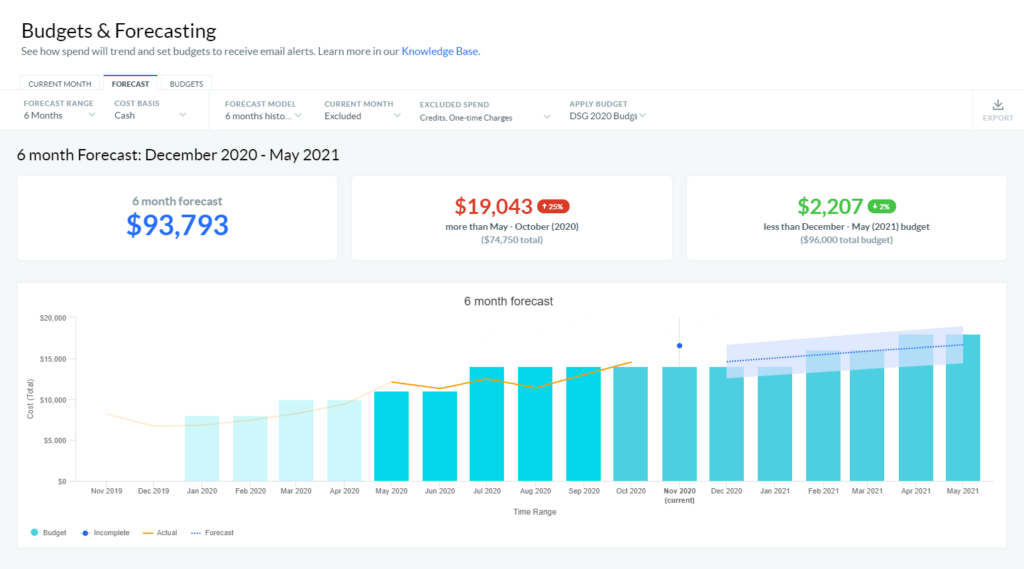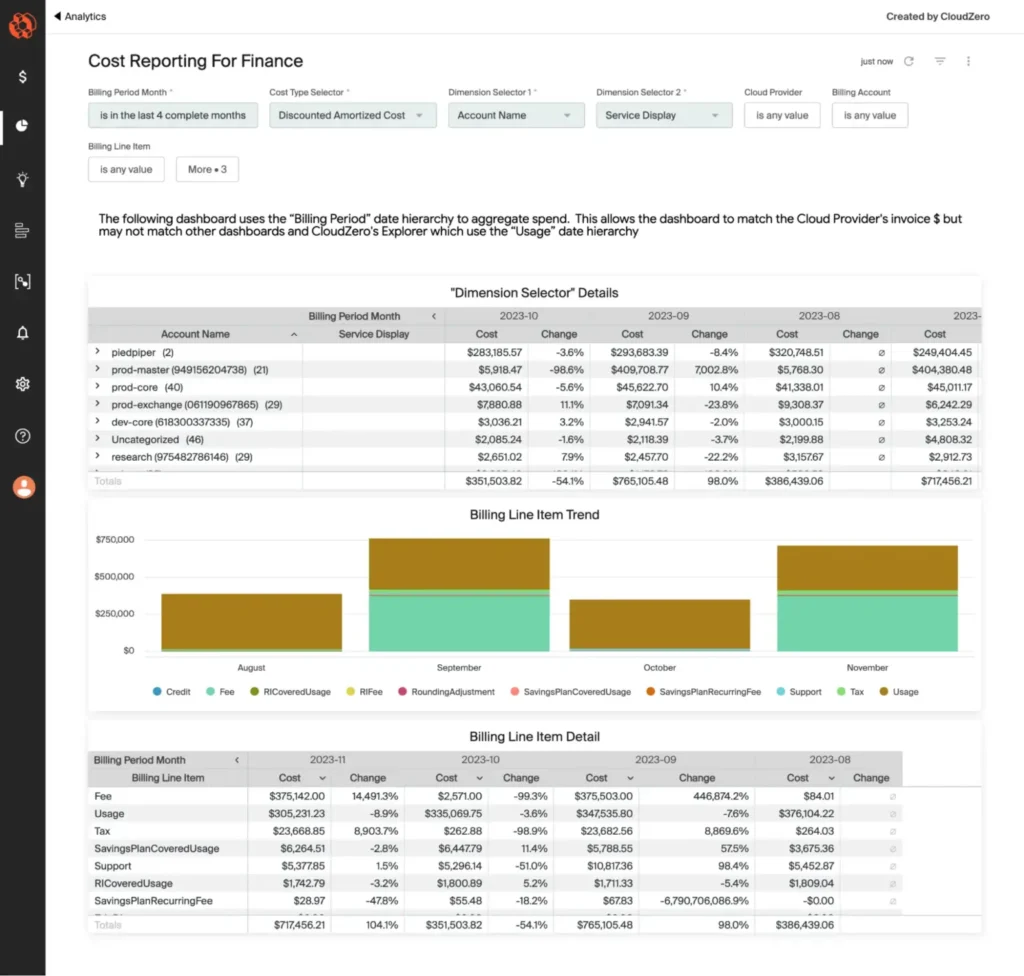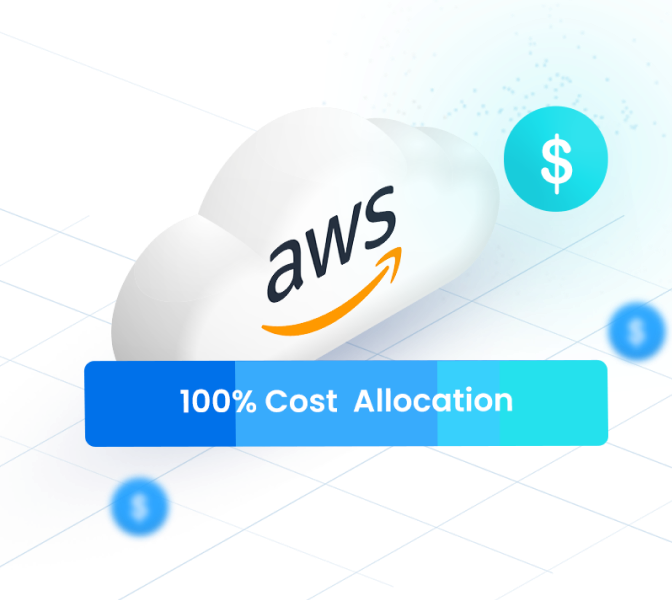- Blog
- Cloud Management
- 11 Top Finout Alternatives & Competitors in 2025
11 Top Finout Alternatives & Competitors in 2025
Last Updated: August 26, 2025, Cloud Management
Finout has gained attention for its “unit economics” approach to cloud cost visibility, helping teams map spend back to business metrics like features or customers.
Yet, as environments expand across AWS, Azure, GCP, Kubernetes, SaaS, and AI workloads, managing and optimizing cloud spend has become more complex than ever.
In recent years, the market has grown beyond financial reporting tools to include platforms that emphasize real-time automation, Kubernetes-native insights, and AI-driven optimization. Some focus narrowly on commitments or container costs, while others aim to provide end-to-end cost visibility and governance.
In this article, we’ll explore the leading Finout competitors and alternatives in 2025—breaking down their strengths, limitations, and best-fit use cases so you can choose the right solution for your organization.
1. nOps
nOps is an automation-first FinOps platform built to turn cloud cost management from a reporting exercise into automated, continuous savings. Unlike traditional tools that stop at visibility, nOps actively rightsizes workloads, automates commitment management, and eliminates waste across compute, storage, and containers. It also extends FinOps to AI and SaaS costs, offering end-to-end coverage for modern cloud environments.
Features include:
- Visibility & Reporting across cloud, SaaS, and AI spend, with 100% cost allocation across accounts, teams, and workloads.
- FinOps AI Agent: AI trained on your cost data to answer questions and automate tasks like forecasting, anomaly detection, waste reduction, budgeting, and reporting.
- Commitment Management: Fully automated management of RIs and Savings Plans with a 100% utilization guarantee.
- Resource Optimization: Continuous, automated rightsizing across compute, storage, and containers.
- Kubernetes Cost Control: Automated container rightsizing and deep EKS visibility down to the node or container level.
Pros
- Automation across commitments, compute, storage, and Kubernetes
- AI-powered FinOps Agent for forecasting, anomaly detection, and reporting
- Flat, predictable pricing instead of percentage-of-spend fees
Cons
- AWS-first platform; optimization features for Azure and GCP are still growing
Best For
Engineering and finance teams that want automation to deliver continuous savings and ensure 100% cost allocation without manual overhead
Year Founded
2017
Pricing
Flat-fee pricing model with free trial and free tier available.
2. Amazon CloudWatch
Amazon CloudWatch is Amazon’s native monitoring and observability service, which also provides basic cost visibility and anomaly detection features. While not a full FinOps platform, CloudWatch is often used by engineering teams to track resource usage, set alarms on cost spikes, and correlate spending with performance metrics. Its strength lies in being tightly integrated with AWS services, making it a first stop for teams looking to manage costs without a third-party tool.
Pros
- Native AWS integration with no setup overhead
- Real-time metrics and cost anomaly detection
- Pay-as-you-go pricing, aligned with AWS usage
Cons
- Limited to AWS (no multi-cloud or SaaS visibility)
- Basic cost allocation and FinOps features compared to dedicated tools
- Dashboards can require customization to surface business-aligned metrics
Best For
Teams running primarily on AWS that want built-in monitoring and lightweight cost alerts without adopting a separate FinOps platform.
Year Founded
2009 (launched as part of the AWS monitoring suite).
Pricing
Pay-as-you-go: free tier includes basic monitoring; additional charges for custom metrics, dashboards, anomaly detection, and logs (e.g., $0.30 per custom metric/month, $0.10 per alarm/month, and per-GB log ingestion/storage fees).
3. Datadog
Datadog is a leading observability platform that also offers a Cloud Cost Management (CCM) module. It lets engineering and FinOps teams view cost data alongside infrastructure and application performance metrics, making it easier to connect spending with system behavior. The CCM module includes cost attribution, anomaly detection, and optimization recommendations within the same dashboards engineers already use for monitoring.
Pros
- Unified observability + cost insights in one platform
- Cost attribution down to workloads, containers, and tags
- Actionable rightsizing recommendations integrated into workflows
Cons
- Pricing grows quickly as data ingestion and modules expand
- Overkill for teams seeking only cost management (observability-first depth)
- Can feel overwhelming due to broad feature set
Best For
Organizations already using Datadog for observability, or engineering-driven teams that want cost visibility directly within performance monitoring workflows.
Year Founded
2010
Pricing
Modular pricing based on hosts, data volume, and features. Infrastructure monitoring starts around $15 per host/month (with free usage up to 5 hosts). Additional CCM charges are layered on top, and enterprise pricing is customized.
4. Cloudability
Cloudability, originally acquired by Apptio and now part of IBM, is one of the earliest FinOps platforms. It focuses on financial visibility, budgeting, forecasting, and cost allocation across cloud environments. While it was a pioneer in the space, many teams now view it as a traditional cost reporting tool rather than an automation-first FinOps platform.
Pros
- Mature budgeting and forecasting capabilities for finance teams
- Strong cost allocation and chargeback/showback support
- Established enterprise adoption with IBM/Apptio backing
Cons
- Optimization actions require manual follow-up
- Limited Kubernetes-native visibility and automation
- Higher pricing compared to newer competitors
Best For
Enterprises seeking traditional financial reporting, budgeting, and allocation, often led by finance rather than engineering teams.
Year Founded
2011 (acquired by Apptio in 2019, then by IBM in 2023).
Pricing
Percentage-of-cloud-spend model, typically on the higher end of the market. Pricing requires direct sales engagement.
5. Harness
Harness is best known as a CI/CD and developer productivity platform, but it also offers a Cloud Cost Management (CCM) module. Harness CCM integrates cost visibility directly into developer workflows, surfacing spend data for Kubernetes, multi-cloud, and containerized environments. Its focus is on helping engineering teams become more cost-aware during the software delivery lifecycle.
Pros
- Cost visibility embedded into CI/CD workflows
- Policy-based governance (e.g., auto-shutdowns, spend limits)
- Strong Kubernetes and multi-cloud support
Cons
- Pricing is based on a percentage of cloud spend, which can be costly at scale
- Requires setup and ownership by FinOps/engineering teams
- Limited automation compared to optimization-first platforms
Best For
Engineering-driven organizations already using Harness or those that want cost insights tightly integrated into their delivery pipelines.
Year Founded
2016
Pricing
Percentage-of-cloud-spend model. Teams plan: ~2.25% of monthly spend; Enterprise plan: ~2.5% of monthly spend.
6. Densify
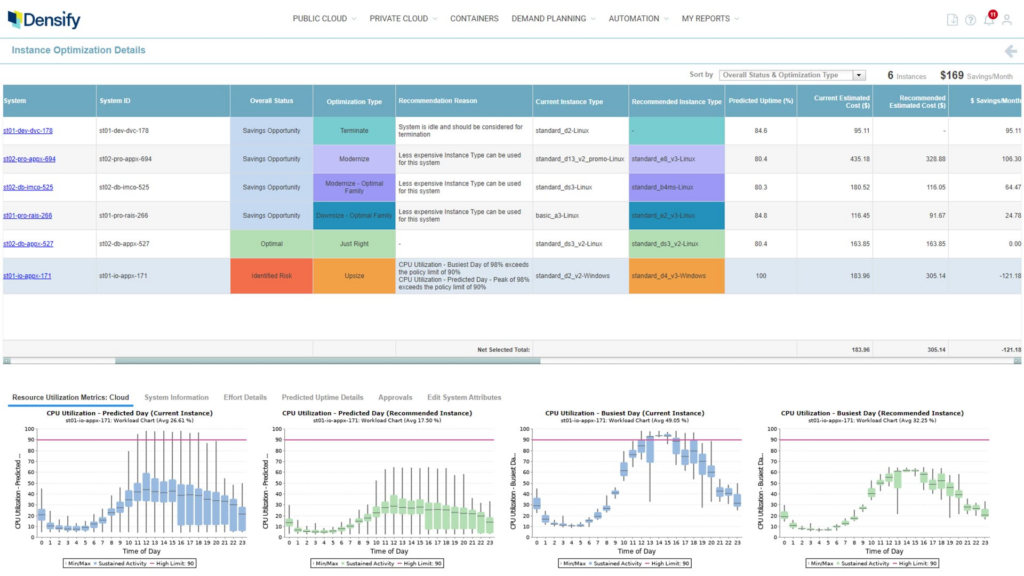
Densify is a cloud optimization platform that specializes in resource rightsizing and workload placement. Unlike tools that focus broadly on budgeting and cost allocation, Densify emphasizes deep analytics to match workloads with the right instance types, families, and cloud services. Its strengths are in automated recommendations that reduce waste and improve efficiency, particularly for enterprises managing large-scale, complex workloads.
Pros
- Advanced workload rightsizing and placement analytics
- Automation for instance family and service selection
- Strong focus on improving efficiency and utilization
Cons
- Less emphasis on financial reporting and budgeting
- Limited Kubernetes-native visibility compared to newer tools
- Requires integration into workflows to realize full value
Best For
Large enterprises with complex, dynamic workloads that need precise optimization of compute resources across AWS, Azure, and GCP.
Year Founded
1999 (originally as Cirba, rebranded to Densify in 2017).
Pricing
Custom pricing based on environment size, workload complexity, and optimization scope. Requires direct vendor engagement.
7. Cast.ai
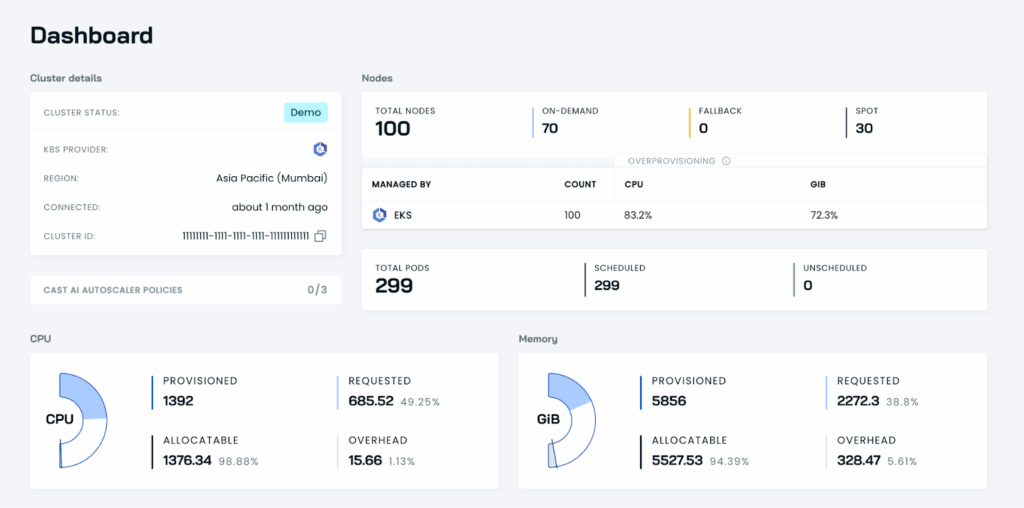
Cast.a is a Kubernetes-focused cost optimization platform that automates cluster management across cloud providers. It continuously analyzes workloads and dynamically adjusts cluster configurations—scaling nodes up or down, selecting the most cost-efficient instance types, and managing Spot usage. The platform emphasizes real-time savings through automation, making it popular with engineering-led teams running large-scale Kubernetes environments.
Pros
- Automated node scaling and instance type selection
- Strong Spot Instance management for Kubernetes workloads
- Multi-cloud support (AWS, GCP, Azure) with real-time optimization
Cons
- Kubernetes-first scope; less useful for non-containerized workloads
- Limited financial governance and reporting compared to FinOps platforms
- Savings impact depends on workload variability and cloud maturity
Best For
Engineering and platform teams running production Kubernetes clusters that want hands-off optimization of nodes, instances, and Spot usage.
Year Founded
2019
Pricing
Usage-based pricing, typically a percentage of realized savings, with enterprise contracts available for larger organizations.
8. Zesty
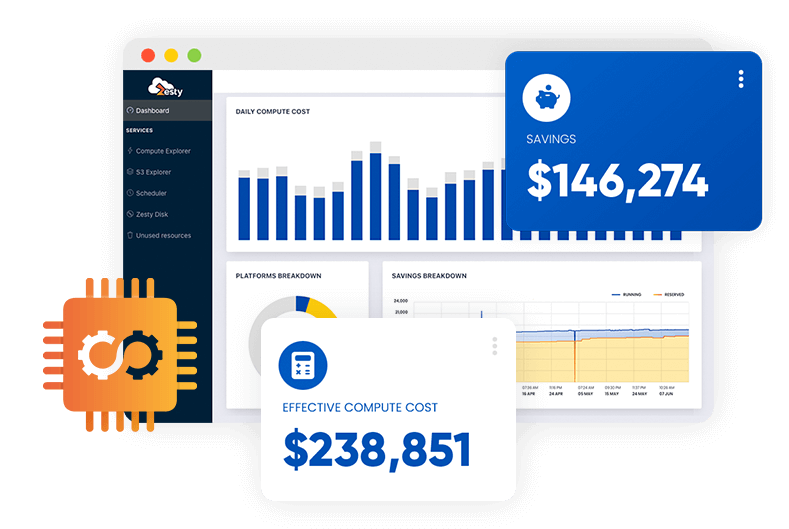
Zesty is a cloud cost optimization platform that focuses on automating commitments and storage management. It dynamically purchases and sells Reserved Instances and Savings Plans to maximize utilization, while also providing automated EBS volume optimization by resizing and detaching underused storage. Zesty’s approach is highly automation-driven, reducing the need for manual FinOps intervention.
Pros
- Automated RI and Savings Plan management with no manual tracking
- Storage optimization (EBS) that reduces waste automatically
- Works natively with AWS, minimizing integration overhead
Cons
- Primarily focused on AWS (limited multi-cloud support)
- Narrower scope compared to all-in-one FinOps platforms, with limited visibility features beyond commitments and storage
Best For
AWS-heavy organizations that want automated savings on commitments and storage without deep FinOps expertise.
Year Founded
2019
Pricing
Percentage-of-savings model, typically 20–25% of realized savings.
9. CloudZero
CloudZero is a cloud cost intelligence platform designed to connect cloud spending with business outcomes. It ingests spend data from AWS, Azure, GCP, Kubernetes, and select SaaS platforms, then provides unit-cost visibility such as cost per customer, product, or feature. This helps engineering and product teams understand how architectural decisions affect margins and profitability.
Pros
- Strong unit-cost visibility (cost per feature, team, or customer)
- Tag-less allocation for incomplete tagging environments
- Easy onboarding and adoption compared to heavy FinOps tools
Cons
- Limited advanced forecasting and financial modeling
- Dashboards less customizable than competitors
- Setup requires defining business-aligned dimensions upfront
Best For
SaaS and tech companies that want to tie engineering and product costs directly to business metrics like margins and unit economics.
Year Founded
2016
Pricing
Tiered pricing model based on cloud spend volume, with enterprise options available.
10. ProsperOps
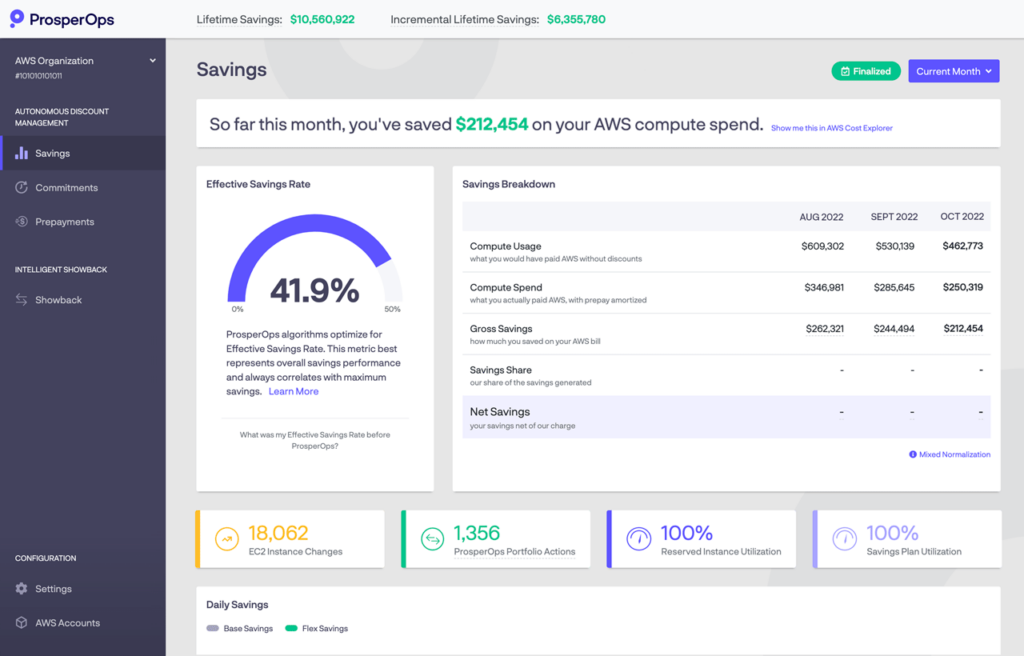
ProsperOps is a commitment management platform that automates the purchase and optimization of AWS Reserved Instances and Savings Plans. Unlike traditional FinOps tools that provide recommendations for manual action, ProsperOps executes the transactions automatically, ensuring near 100% utilization and delivering savings without operational overhead. Its focus is narrow but powerful: maximizing cost efficiency from AWS commitments.
Pros
- Fully automated RI and Savings Plan management
- High utilization rates with continuous adjustments
- Clear, performance-based pricing tied to realized savings
Cons
- Narrow scope (commitments only, no broader optimization)
- AWS-focused, lacking multi-cloud or Kubernetes visibility
- Limited financial governance/reporting beyond commitments
Best For
Organizations with significant AWS spend that want hands-free commitment management to maximize savings without manual effort.
Year Founded
2018
Pricing
Typically a percentage of realized savings (commonly 20–30%).
11. CloudHealth

CloudHealth, now rebranded as VMware Aria Cost, is an enterprise-focused cloud financial management platform. It provides governance, security, and cost visibility across multi-cloud and hybrid environments, with strong adoption among IT operations and enterprises invested in VMware infrastructure. CloudHealth emphasizes policy-driven governance, cost allocation, and capacity planning rather than automation-led optimization.
Pros
- Unified visibility across public cloud and VMware infrastructure
- Policy-driven governance and compliance automation
- Detailed cost allocation and chargeback/showback support
Cons
- Complex setup and requires mature tagging strategy
- Limited automation and Kubernetes-native optimization
- Pricing is opaque and contracts are often expensive
Best For
Enterprises running VMware-heavy or hybrid environments that need strong governance and compliance alongside cloud cost visibility.
Year Founded
2012 (acquired by VMware in 2018).
Pricing
Subscription-based, typically tiered by monthly cloud spend; enterprise pricing requires direct engagement.
The Bottom Line
Finout is best suited for organizations that want to tie cloud costs back to business metrics with unit economics. It provides dashboards that map spend by feature, customer, or team, but its capabilities largely stop there: optimization requires manual action, Kubernetes visibility is focused on cost allocation without efficiency benchmarking, and commitment management is limited to tracking Reserved Instances and Savings Plans rather than automated optimization.
nOps builds on the same visibility foundation but goes further—automating optimization across commitments, compute, storage, and containers. It not only shows waste but removes it, with flat pricing instead of usage-based fees. That keeps costs predictable as your environment grows while savings continue to compound.
nOps also provides both a free trial and a free tier, regardless of spend. The free tier includes tools like the MAP Tracker, optimization opportunity discovery, and cost explorer with 15+ dimensions—valuable for anyone looking to understand and manage cloud spend.
nOps was recently ranked #1 with five stars in G2’s cloud cost management category, and we optimize $2+ billion in cloud spend for our customers — book a demo with one of our AWS experts to try it out for yourself.
